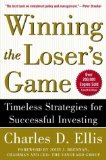Lending Club is a social lending network that connects lenders and borrowers through investing in notes. You may loan as little as $25 or as much as you want. Lending Club makes money by charging a processing fee from the borrower and a servicing fee from the lender. The processing fee is a percentage between 0.75 and 3.00% of the loan amount. The service fee is 1% of each payment from the borrower.
The benefits of investing money through loans is that Lending Club allows you to earn between 6.69 and 19.37% depending on the rating of the borrower. Lending money does involve some risk as the borrowers may default on the loan. Another benefit is the $50 bonus for signing up through my referral (I don’t believe I make any money on this transaction). The following is a step-by-step guide on how to sign up for a Lending Club account and receive your $50 bonus.
Create Lending Club Member Account
Creating a Lending Club member account is super easy. If you are interested in a $50 referral bonus leave a comment or email me (pfstartup@gmail.com) and I will send you an email invitation. I don’t think I get anything out of this, but $50 is enough to fund two separate loans.
If you’re not interested in a $50 bonus, just follow this LINK. Creating a member account requires the following information: email address, password, security question, security answer, screen name and a human verification code. Also, you have to agree to the Terms of Use. After selecting next, all you have to do is wait for a confirmation email.
Enable Investing
Once you receive your confirmation e-mail and have followed it to Lending Club’s website, you can click on “My Account”. You are given two options: Invest or Get a Loan. Select Invest and you are taken to a 4 step set-up process.
The first page is your personal information and a few agreements. For personal information you have to enter the following: first name, last name, SSN, DOB, street address, city, state, zip code and home phone. Additionally, you have to agree to the note purchase agreement, no tax withholding and declaration of trust.
Step 2 deals with identity verification. Apparently, my identity has already been verified, moving right along…
Step 3 requires the necessary banking information to link to an external account. The required information is account holder’s first name, account holder’s last name, name of bank, routing number and account number. Also, a bank account verification and debit authorization agreement is required.
The final step is unique when compared to other investing account sign-ups. Lending Club claims that borrowers are less likely to default on a loan if they feel connected to you. The final step allows you to designate your geography, education, workplace and other associations, which will appear publicly next to your screen name.
Now you are ready to be a Lending Club lender. They use an interesting method of verifying your bank account. Most places send trial deposits into your bank account. Lending Club removes a value less than $1 from your account and puts it into your Lending Club account. You then verify this amount in your account section of Lending Club.
Security
Lending Club uses Secure Socket Layer (SSL) certificate technology to secure website connections. SSL also ensures that all data entered is appropriately encrypted. Lending Club ensures that all sensitive personal and financial data is stored in a highly secure environment.
Conclusion
Creating a Lending Club account is very easy and can be done in about 5 minutes. I have not done any lending yet, but when I do I will write a review. Until then, Jonathan at My Money Blog has written a few times on his opinions of Lending Club. Again, if you are interested in giving Lending Club a shot and are interested in a $50 sign-up bonus either leave a comment or email me at pfstartup at gmail dot com.
If you like what you have read please consider signing up for automatic updates via e-mail or RSS




 Posted by pfstartupblog
Posted by pfstartupblog 

